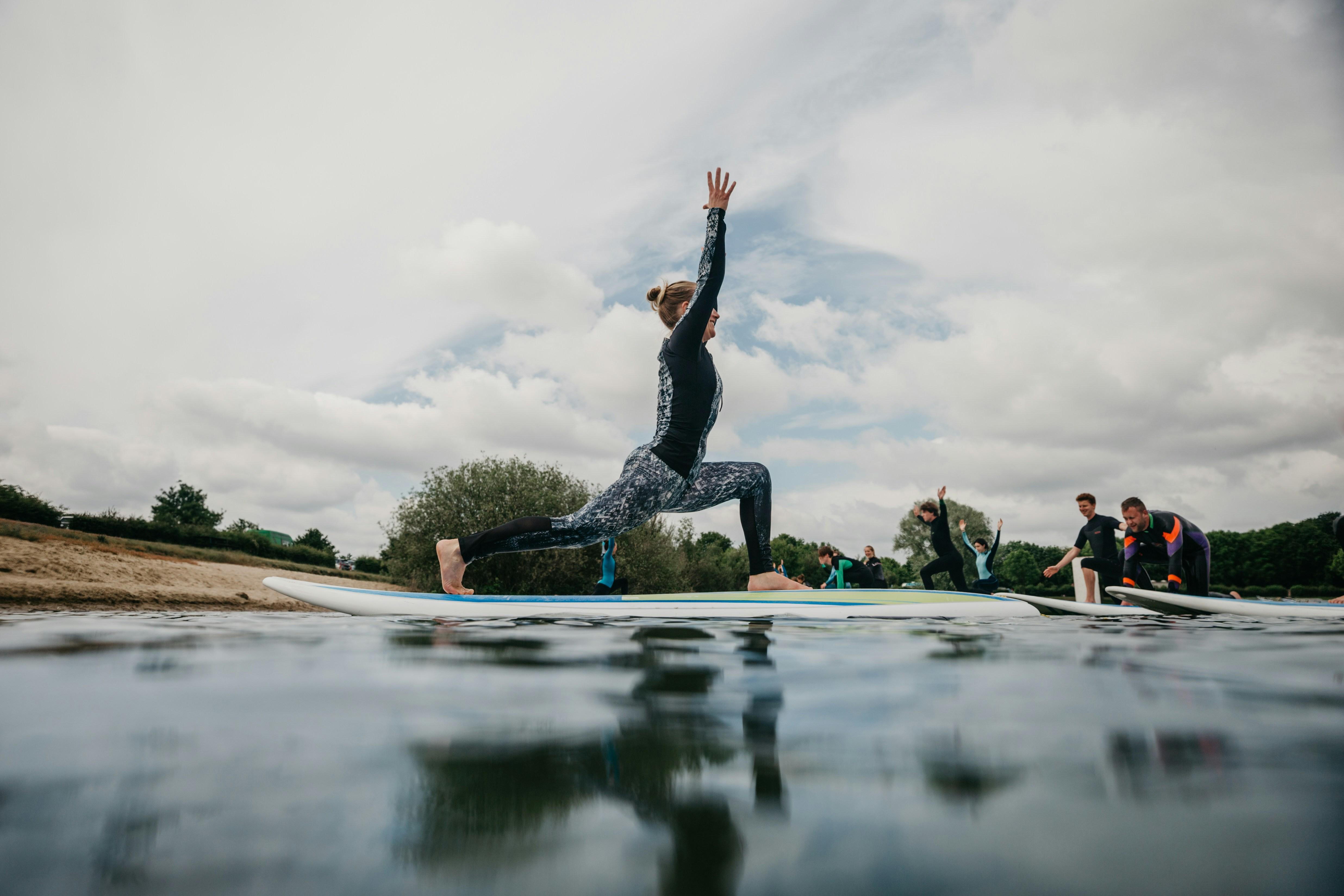In the quiet moments before a dancer takes the stage, or an athlete steps onto the field, there is a ritual that unites them—a ritual as old as physical exertion itself: the stretch. Static stretching, with its gentle holds and deliberate pauses, has long been a cornerstone of physical preparation and recovery. But what lies beneath this seemingly simple practice? What secrets do these elongated postures hold within their sinews? As we delve into the science behind static stretching, we uncover a world where physiology meets precision, where the art of stillness can unlock performance potential and aid in the preservation of the body’s harmonious function. Join us on this exploration of why static stretching remains a vital and effective component of fitness and well-being, a bridge between motion and rest, activity and tranquility.
Understanding Muscle Physiology in Static Stretching
When you engage in static stretching, your muscles are taken to a point of tension and held there. This process influences the muscle fibers, connective tissues, and even the nervous system, contributing to the flexibility and range of motion. Muscle fibers consist of both fast-twitch and slow-twitch fibers, each responding differently to stretching. Static stretching primarily affects the slow-twitch fibers, which are more endurance-oriented and less prone to fatigue. By holding a stretch, these fibers elongate and adapt, enhancing their ability to withstand longer periods of tension.
The role of connective tissues is equally crucial. These tissues, including tendons and fascia, are more pliable than muscle fibers. During static stretching, they gradually lengthen, which can lead to improved flexibility and reduced risk of injury. The nervous system also plays a significant role by adjusting the stretch reflex. As the muscle is held in a stretched position, the nervous system reduces its initial resistance, allowing for a deeper stretch over time. Benefits of static stretching include:
- Increased muscle flexibility
- Improved joint range of motion
- Reduced muscle tension
- Enhanced muscular coordination
By understanding the physiological responses involved, it becomes clear why static stretching is a powerful tool for athletes and fitness enthusiasts alike.
Unlocking Flexibility: How Static Stretching Enhances Range of Motion
Static stretching plays a pivotal role in enhancing the body’s range of motion by gently coaxing muscles and connective tissues to extend beyond their resting length. This process not only aids in increasing flexibility but also contributes to overall muscle health. When practiced consistently, static stretching leads to long-term improvements in joint mobility and muscular elasticity. This is achieved through the sustained hold of a stretch, which allows the muscle fibers to gradually adapt and elongate.
Key benefits of incorporating static stretching into your routine include:
- Reduced muscle stiffness, allowing for smoother and more efficient movement.
- Improved posture by alleviating tension in muscles that contribute to misalignment.
- Enhanced blood circulation, facilitating better nutrient delivery and waste removal from muscle tissues.
By integrating these stretches into your daily regimen, you create a foundation for more dynamic and active movements, ultimately leading to a more agile and resilient body.

The Role of Time and Tension in Effective Stretching Practices
In the realm of static stretching, the interplay between time and tension is pivotal for unlocking the full potential of flexibility. Time acts as a crucial factor, as holding a stretch for a sustained period allows the muscle fibers to gradually elongate and adapt to the new length. This gentle persistence encourages the nervous system to recognize the stretch as a safe and natural extension, leading to a more profound release of muscle tension.
Equally important is the concept of tension. The right amount of tension helps to engage the stretch reflex, prompting the muscles to relax and lengthen effectively. Here are some key points to consider:
- Maintain a balance between discomfort and pain, ensuring the stretch feels challenging yet manageable.
- Focus on breathing deeply to enhance relaxation and reduce unnecessary tension.
- Gradually increase the intensity of the stretch over time, allowing the body to adapt safely.
By mastering the delicate dance between time and tension, static stretching becomes not just a physical exercise, but a mindful practice that cultivates greater body awareness and flexibility.

Incorporating Static Stretching into Your Fitness Routine for Optimal Results
Static stretching has long been a staple in fitness routines, not just for its ability to enhance flexibility but also for its surprising array of benefits that support overall performance and recovery. By holding a stretch for a prolonged period, usually between 15 to 60 seconds, you allow the muscles to relax and lengthen, which can help improve your range of motion. This type of stretching is particularly effective post-workout when muscles are warm and pliable, leading to reduced muscle stiffness and a lower risk of injury.
Incorporating static stretching into your fitness regimen can offer a multitude of benefits, such as:
- Improved Flexibility: Enhances the length of muscles and tendons, aiding in better posture and performance.
- Increased Blood Flow: Promotes circulation, which can expedite recovery by delivering nutrients and oxygen to tired muscles.
- Stress Reduction: Provides a moment of mindfulness and relaxation, which can alleviate stress and tension.
- Enhanced Coordination: By lengthening muscles, static stretching can improve your overall balance and coordination.
To maximize the effectiveness of static stretching, it’s crucial to integrate it strategically into your routine, ideally after your workouts, to reap the full benefits of improved flexibility and muscle recovery.
In Summary
As we draw the curtain on our exploration of static stretching, it’s clear that this age-old practice is more than just a prelude to athletic endeavors. Rooted in scientific understanding, static stretching serves as a bridge between the mind and body, offering a moment of stillness in our fast-paced world. By gently coaxing our muscles into greater flexibility, it invites balance and harmony, reducing the risk of injury and enhancing overall performance. Whether you’re a seasoned athlete or a casual enthusiast, incorporating static stretching into your routine can unlock a world of benefits. So, the next time you find yourself reaching for the sky or bending towards your toes, remember that each stretch is a step towards a more resilient you. Embrace the pause, and let the science of static stretching guide you towards a more flexible future.
